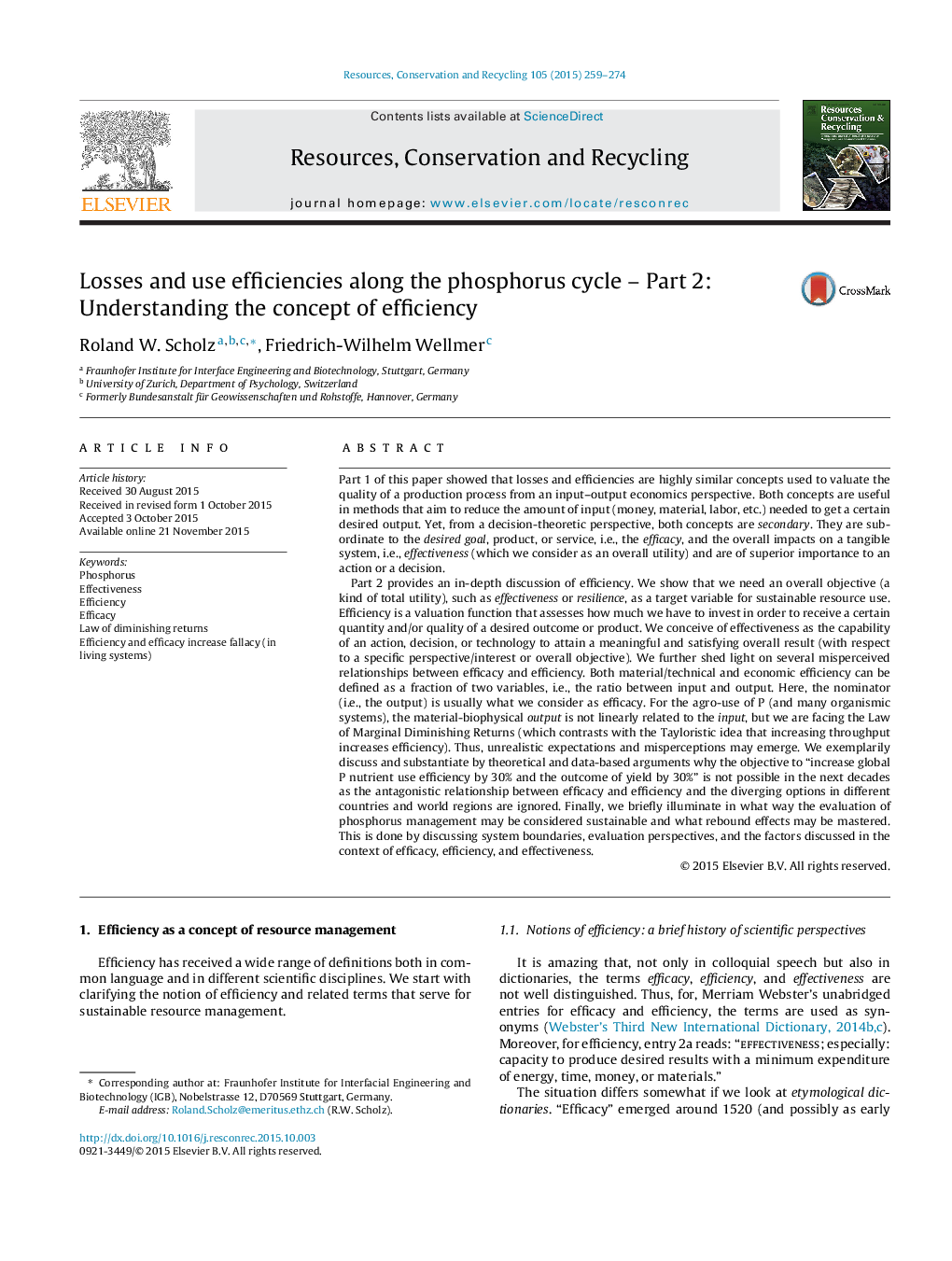| کد مقاله | کد نشریه | سال انتشار | مقاله انگلیسی | نسخه تمام متن |
|---|---|---|---|---|
| 1062744 | 948175 | 2015 | 16 صفحه PDF | دانلود رایگان |
• Loss and efficiency management are key tools of sustainable phosphorus management.
• Efficacy is the primary goal, effectiveness represents the systemic overall utility.
• Efficiency definitions rely on different material and value-based inputs and outputs.
• There is a efficacy–efficiency antagonism in most living systems.
• Increasing 30% of increase of crop yields and of P-nutrient efficiency is unfeasible.
Part 1 of this paper showed that losses and efficiencies are highly similar concepts used to valuate the quality of a production process from an input–output economics perspective. Both concepts are useful in methods that aim to reduce the amount of input (money, material, labor, etc.) needed to get a certain desired output. Yet, from a decision-theoretic perspective, both concepts are secondary. They are subordinate to the desired goal, product, or service, i.e., the efficacy, and the overall impacts on a tangible system, i.e., effectiveness (which we consider as an overall utility) and are of superior importance to an action or a decision.Part 2 provides an in-depth discussion of efficiency. We show that we need an overall objective (a kind of total utility), such as effectiveness or resilience, as a target variable for sustainable resource use. Efficiency is a valuation function that assesses how much we have to invest in order to receive a certain quantity and/or quality of a desired outcome or product. We conceive of effectiveness as the capability of an action, decision, or technology to attain a meaningful and satisfying overall result (with respect to a specific perspective/interest or overall objective). We further shed light on several misperceived relationships between efficacy and efficiency. Both material/technical and economic efficiency can be defined as a fraction of two variables, i.e., the ratio between input and output. Here, the nominator (i.e., the output) is usually what we consider as efficacy. For the agro-use of P (and many organismic systems), the material-biophysical output is not linearly related to the input, but we are facing the Law of Marginal Diminishing Returns (which contrasts with the Tayloristic idea that increasing throughput increases efficiency). Thus, unrealistic expectations and misperceptions may emerge. We exemplarily discuss and substantiate by theoretical and data-based arguments why the objective to “increase global P nutrient use efficiency by 30% and the outcome of yield by 30%” is not possible in the next decades as the antagonistic relationship between efficacy and efficiency and the diverging options in different countries and world regions are ignored. Finally, we briefly illuminate in what way the evaluation of phosphorus management may be considered sustainable and what rebound effects may be mastered. This is done by discussing system boundaries, evaluation perspectives, and the factors discussed in the context of efficacy, efficiency, and effectiveness.
Journal: Resources, Conservation and Recycling - Volume 105, Part B, December 2015, Pages 259–274
